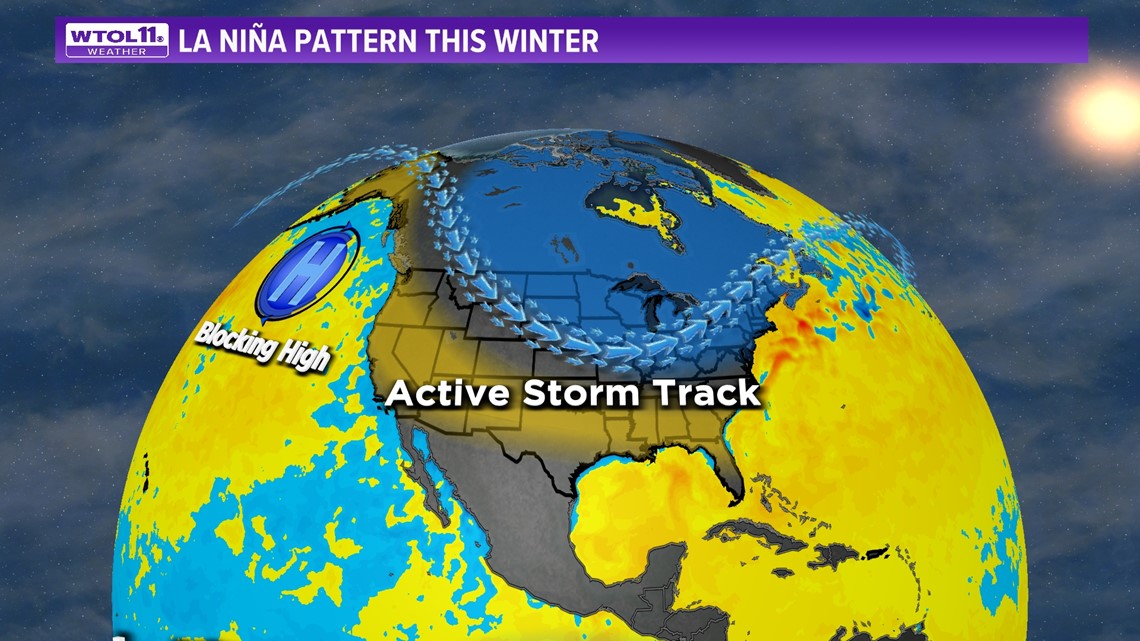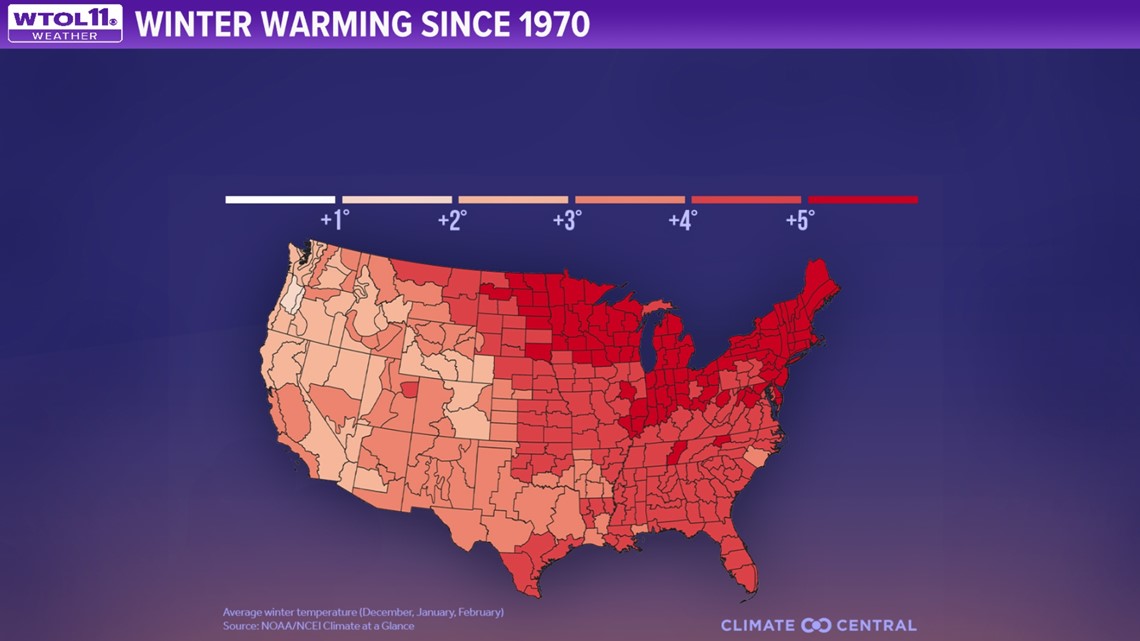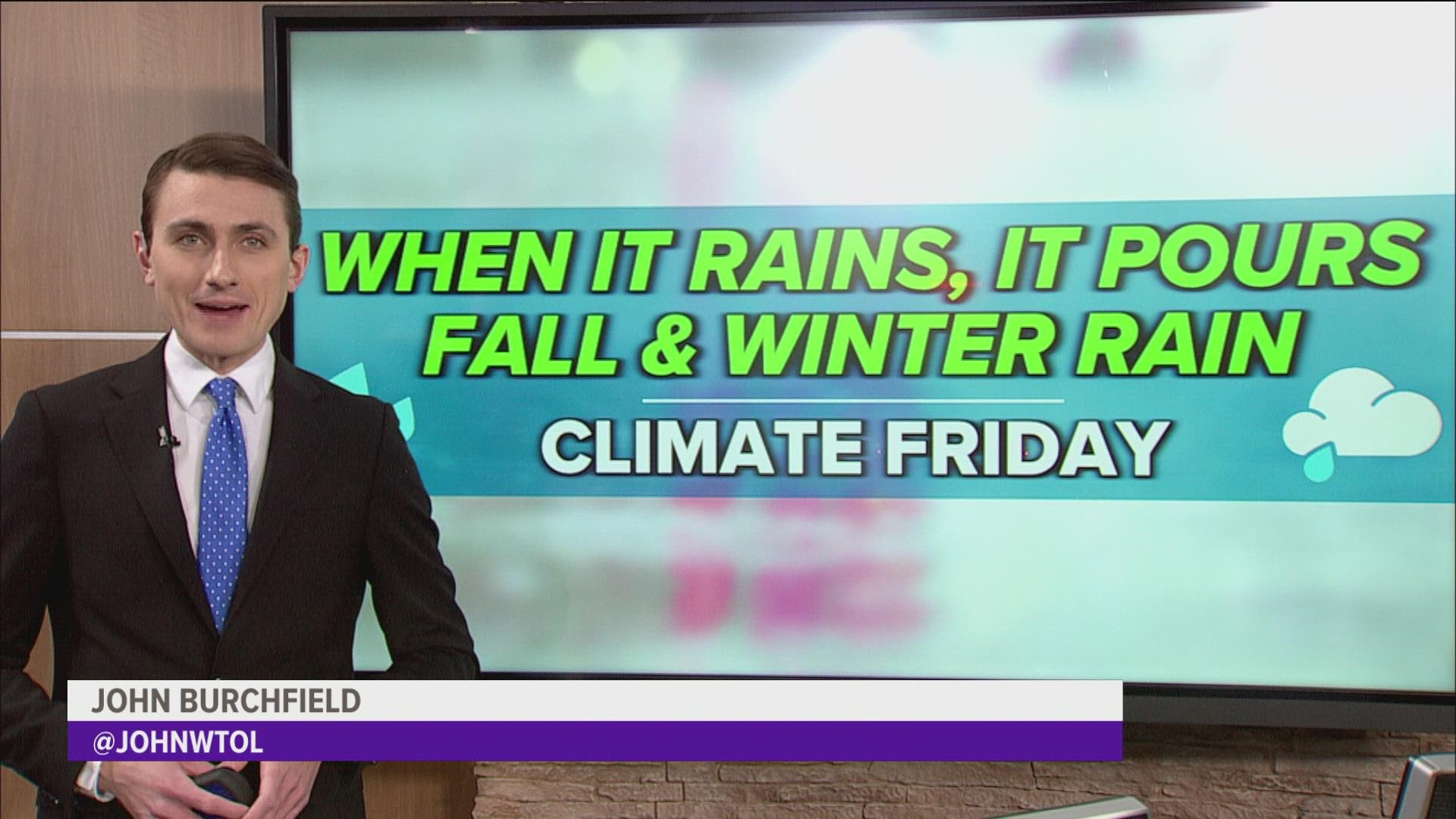TOLEDO, Ohio — Now that Thanksgiving is in the rearview mirror and December has arrived, that means colder weather and winter storms.
Not all storms bring snow, however, and last weekend was just one example of rainy weather in the late fall and winter months. On Sunday, Toledo Express Airport picked up 1.67 inches of rain, making it the wettest day of 2022 so far.
But is climate change playing a role in winter precipitation? And how might the winter months be growing rainier in the future?
Before we analyze the impacts of climate change, understand that seasonal weather patterns and individual storm systems dictate our rainfall and snowfall. This winter will bring La Niña conditions, meaning a more active storm track for the Great Lakes region.


This long-range weather pattern will send us numerous storm systems, but the specific storm track will dictate whether we end up on the rainy or snowy side of things. In addition to the La Niña conditions, sort-term jet stream fluctuations impact our day-to-day weather.
But climate change is playing a big role in winter precipitation.
Overall the winter months are growing warmer, leading to more evaporation and precipitation. In the last decade, November has grown 1.4 degrees warmer and December has become a whopping 3.1 degrees warmer. Since 1970, winter temperatures have climbed a tremendous 5 degrees.


How do these warmer temperatures impact winter precipitation? Warmer weather increases evaporation, and with more moisture in the clouds, greater rainfall and snowfall results. Just as a stovetop turned to high will boil water much faster than one set to low, a world with warmer air and water temperatures fuels greater evaporation and precipitation.
Due to the rapid increase in winter temperatures, rainfall and snowfall have also ramped up. Across most of the Great Lakes region, winter rainfall has increased significantly, whereas the southeastern United States and Pacific Northwest have seen a slight decline in winter precipitation.
Overall most of the U.S. has felt an uptick in winter rainfall, in part due to climate change. This trend will likely continue into the future as temperatures and sea surfaces continue to warm.
The bottom line is this: several factors impact winter precipitation. La Niña provides a long-range weather pattern more conducive to frequent rain and snow during the winter. Individual fluctuations in the jet stream shape day-to-day variations in the weather.
Climate change also has increased moisture and enhanced precipitation totals during the winter.
Whatever weather Mother Nature has in store this winter, the WTOL 11 weather team will keep you safe and informed.

